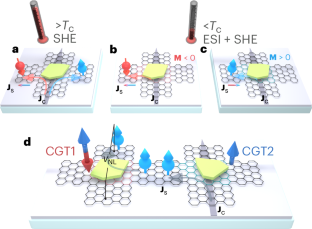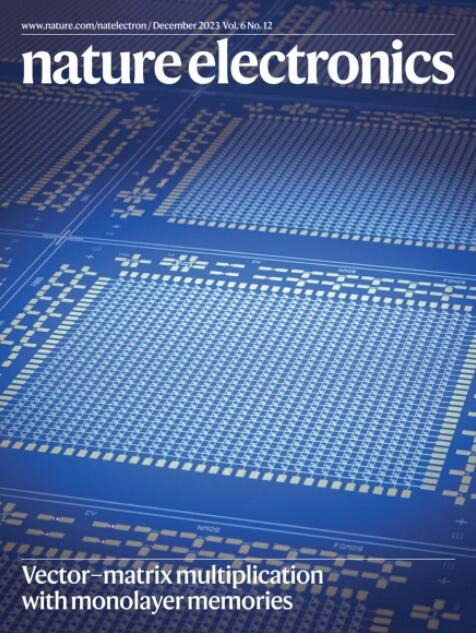基于接近范德华磁体 Cr2Ge2Te6 的无缝石墨烯自旋阀
IF 33.7
1区 工程技术
Q1 ENGINEERING, ELECTRICAL & ELECTRONIC
引用次数: 0
摘要
原始石墨烯可能是传输自旋信息的理想介质。在石墨烯中,邻近效应--即利用邻近材料改变邻近(或近似)区域材料的特性--也可以通过获得自旋轨道耦合或磁交换耦合来产生和检测自旋。然而,开发仅基于邻近效应的无缝自旋电子器件仍具有挑战性。在这里,我们报告了一种二维石墨烯自旋阀,它可以通过接近范德华磁体 Cr2Ge2Te6 来实现。自旋前驱测量结果表明,当石墨烯与 Cr2Ge2Te6 相互连接时,石墨烯获得了自旋轨道耦合和磁交换耦合。这导致通过电自旋注入和自旋霍尔效应产生自旋,同时保持自旋传输。同时存在的自旋轨道耦合和磁交换耦合也导致了相当大的反常霍尔效应。本文章由计算机程序翻译,如有差异,请以英文原文为准。


A seamless graphene spin valve based on proximity to van der Waals magnet Cr2Ge2Te6
Pristine graphene is potentially an ideal medium for transporting spin information. Proximity effects—where a neighbouring material is used to alter the properties of a material in adjacent (or proximitized) regions—can also be used in graphene to generate and detect spins by acquiring spin–orbit coupling or magnetic exchange coupling. However, the development of seamless spintronic devices that are based only on proximity effects remains challenging. Here we report a two-dimensional graphene spin valve that is enabled by proximity to the van der Waals magnet Cr2Ge2Te6. Spin precession measurements show that the graphene acquires both spin–orbit coupling and magnetic exchange coupling when interfaced with the Cr2Ge2Te6. This leads to spin generation by both electrical spin injection and the spin Hall effect, while retaining spin transport. The simultaneous presence of spin–orbit coupling and magnetic exchange coupling also leads to a sizeable anomalous Hall effect. A graphene spin valve that is in close proximity to the ferromagnetic van der Waals material Cr2Ge2Te6 can offer spin generation, transport and detection.
求助全文
通过发布文献求助,成功后即可免费获取论文全文。
去求助
来源期刊

Nature Electronics
Engineering-Electrical and Electronic Engineering
CiteScore
47.50
自引率
2.30%
发文量
159
期刊介绍:
Nature Electronics is a comprehensive journal that publishes both fundamental and applied research in the field of electronics. It encompasses a wide range of topics, including the study of new phenomena and devices, the design and construction of electronic circuits, and the practical applications of electronics. In addition, the journal explores the commercial and industrial aspects of electronics research.
The primary focus of Nature Electronics is on the development of technology and its potential impact on society. The journal incorporates the contributions of scientists, engineers, and industry professionals, offering a platform for their research findings. Moreover, Nature Electronics provides insightful commentary, thorough reviews, and analysis of the key issues that shape the field, as well as the technologies that are reshaping society.
Like all journals within the prestigious Nature brand, Nature Electronics upholds the highest standards of quality. It maintains a dedicated team of professional editors and follows a fair and rigorous peer-review process. The journal also ensures impeccable copy-editing and production, enabling swift publication. Additionally, Nature Electronics prides itself on its editorial independence, ensuring unbiased and impartial reporting.
In summary, Nature Electronics is a leading journal that publishes cutting-edge research in electronics. With its multidisciplinary approach and commitment to excellence, the journal serves as a valuable resource for scientists, engineers, and industry professionals seeking to stay at the forefront of advancements in the field.
 求助内容:
求助内容: 应助结果提醒方式:
应助结果提醒方式:


